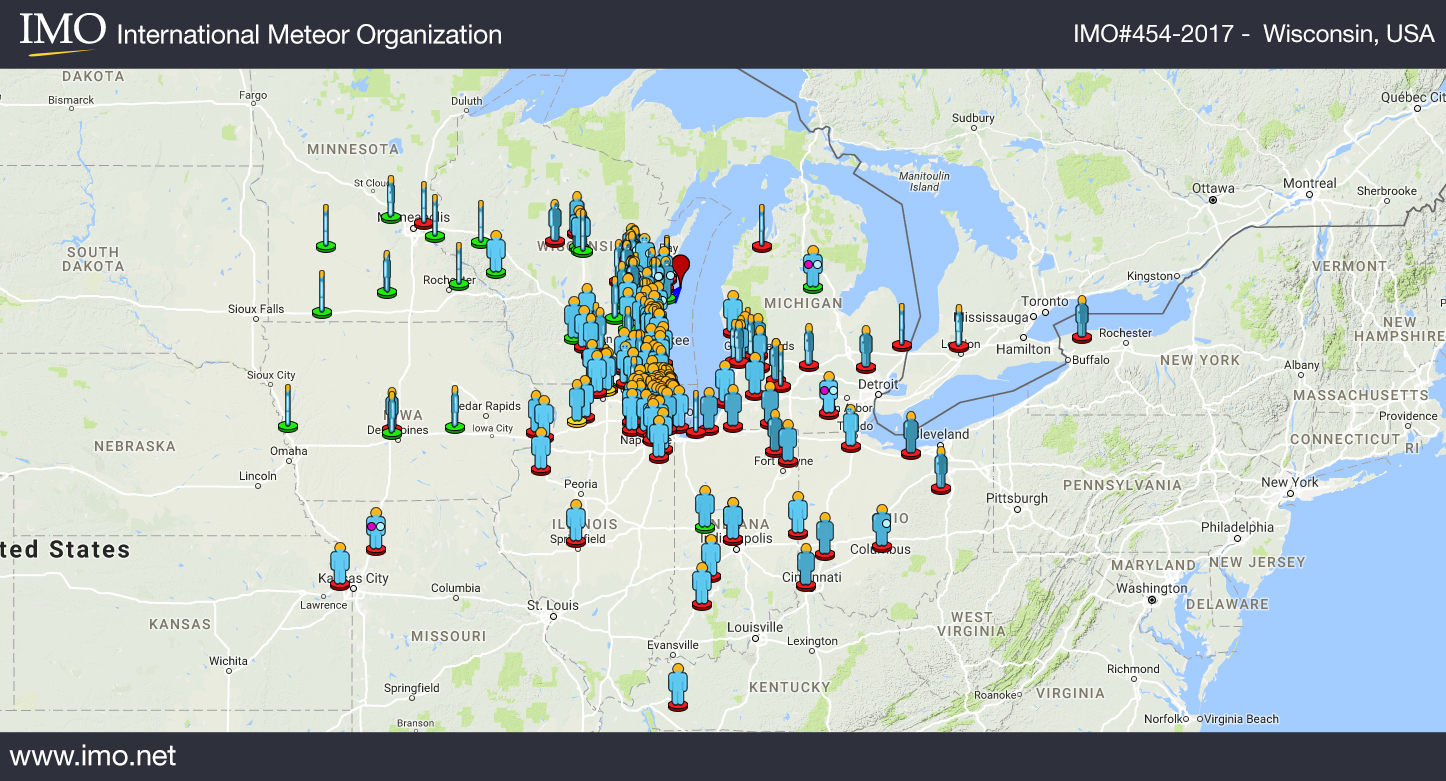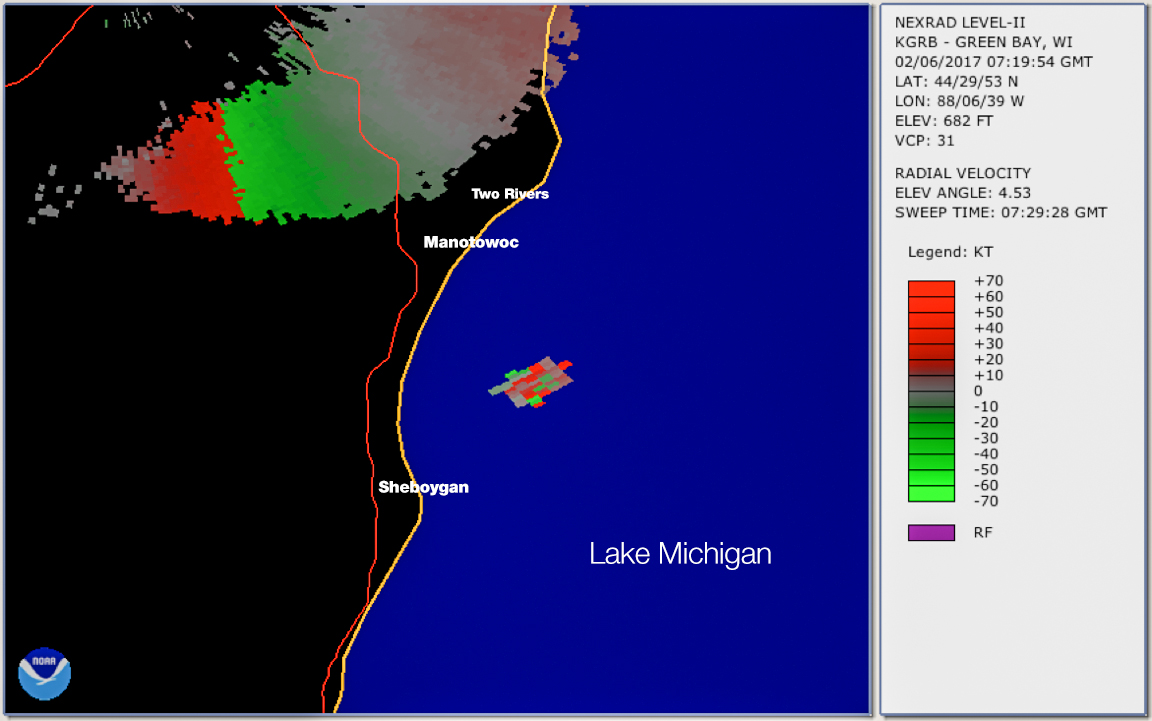February is maybe not the best period of the year to dive in a lake, especially a Northern hemisphere one like the Lake Michigan. But courageous (or robot equipped) people may find some interest in such a challenge today!

On February 6th, 2017, around 07h 27min UT (ie 01:27 am CST), a very bright greenish fireball was widely observed, heard (by 23% of witnesses) and filmed: more than 450 people have reported it so far! Such reports comes from all states South of the Great Lakes regions: mainly Wisconsin and Illinois, but the event was also visible from Minnesota, Iowa, Northen Missouri, North-Eastern Kansas, Indiana, Ohio, Northern Kentucky, Michigan, Northern, New York state, and Ontario (Canada). Reports and videos described a very bright green medium speed fireball that lasted around 4.5 seconds and underwent multiple final light bursts before disappearing.
From automatic analysis of visual reports, the luminous path of the fireball started upright of a surface point located between Boltonville and Fillmore (Washington County, WI), and disappeared 20 km offshore Manitowoc (Manitowoc County, WI), around 40 km altitude, above the Michigan Lake. This trajectory seems to be highly confirmed by NOAA’s NEXRAD Doppler Weather Radar recordings of the NOAA, which shows a radar echo near the end of the meteoroid atmospheric trajectory deduced from visual observations. Which unfortunately means that potential residual meteorites, if any, must currently lay at the bottom of Lake Michigan, where the floor is the deepest (more than 250 m depths)…

Other videos of the event:




 You saw something bright and fast? Like a huge shooting star? Report it: it may be a fireball.
You saw something bright and fast? Like a huge shooting star? Report it: it may be a fireball.  You counted meteors last night? Share your results with us!
You counted meteors last night? Share your results with us!  You took a photo of a meteor or fireball? You have a screenshot of your cam? Share it with us!
You took a photo of a meteor or fireball? You have a screenshot of your cam? Share it with us!  You caught a meteor or fireball on video? Share your video with us!
You caught a meteor or fireball on video? Share your video with us!
One comment